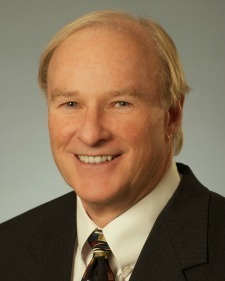Kerry Wilson brought his decades of experience in industry to the College of Engineering in 2011, when he assessed the college’s machine shops and started helping professors understand commercialization and how to make prototypes of their potential products using Notre Dame’s Proof of Technology Demonstration Center. His Springboard Engineering Solutions is based in Innovation Park.

“We are kind of an infrastructure for inventors and entrepreneurs in the area. We help clients and the University do prototyping for their first product concept,” says Wilson, who had taken a dozen products from concept to manufacturing and sales. “About one-third of my time is spent with the University directly helping professors get their ideas into a box and then go to companies to see if they’ll license the intellectual property.”
Wilson and Sunny Shah, the assistant director of ESTEEM, attended the National Science Foundation’s Innovation sponsored I-Corps Program and brought leading-edge ideas back to Notre Dame, where they and professor Michael Kitz teach the Business Model Canvas (BMC), one of the first courses ESTEEM students take.
“It’s a new way to look at getting your ducks lined up before you go about spending a lot of money hiring people and doing prototyping,” Wilson says. “They each are a part of a group of five or six students and are assigned a project the first day of class. They do ideation, figure out ‘this is the business concept we’ve been assigned, how are we going to approach this, how are we going to find what the customer wants.’”
Much of the course involves students’ interviewing potential customers to gauge the viability of their ideas. This is done by making a hypothesis and then proving it true or false. “They’re not even showing a product at that time – just looking at the market segment they think it might fit in,” Wilson says. “Hopefully, they’ll find out that what they have is what the customers need. They can pivot if customers are not interested in their hypothesis but, hopefully, new information will direct them to something else. This changes the BMC business plan and becomes the Aha! moment. Every one of the groups in class has not gone after the customer that they thought they were going after.’”
Most of the products are application software for an iPhone or iPad. Near the end of the course, students develop a Minimum Viable Prototype and take it back to customers to get their input.
“Then there is a little bit of validation,” he says. In the last class, the teams presented their outcomes to the group: two teams came back confident they had a viable product, two learned that the idea would not advance, and three needed more information before a go/no-go decision could be made. All the teams were sold on the methodology of the BMC process.